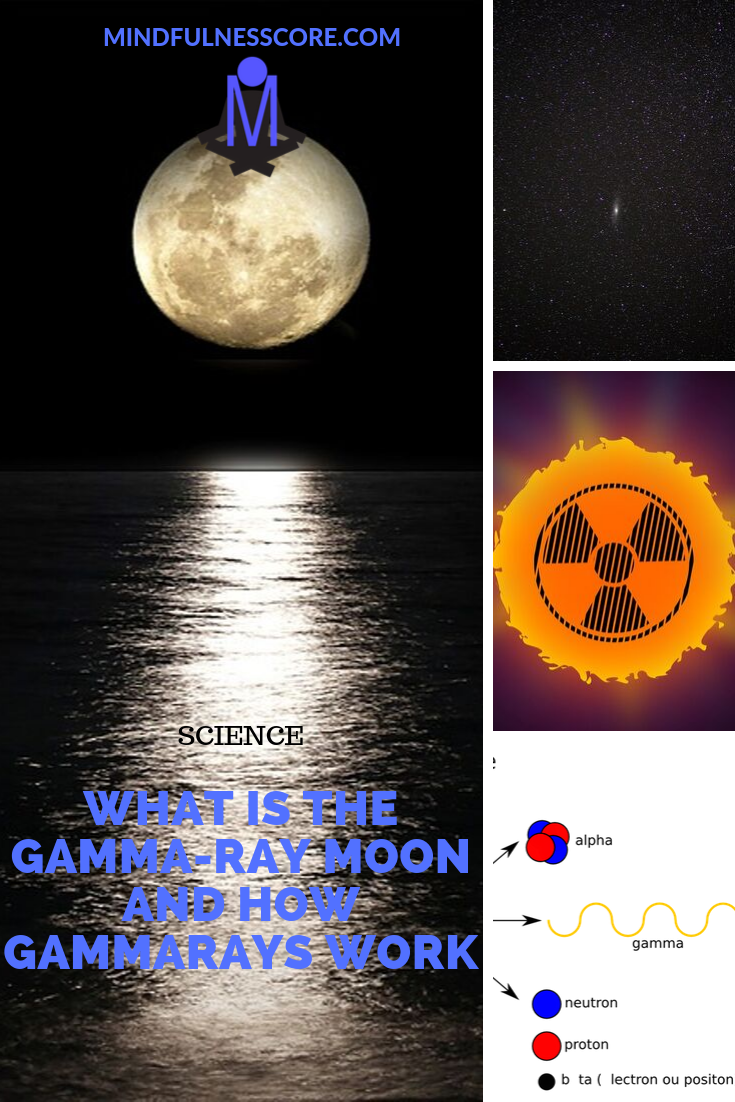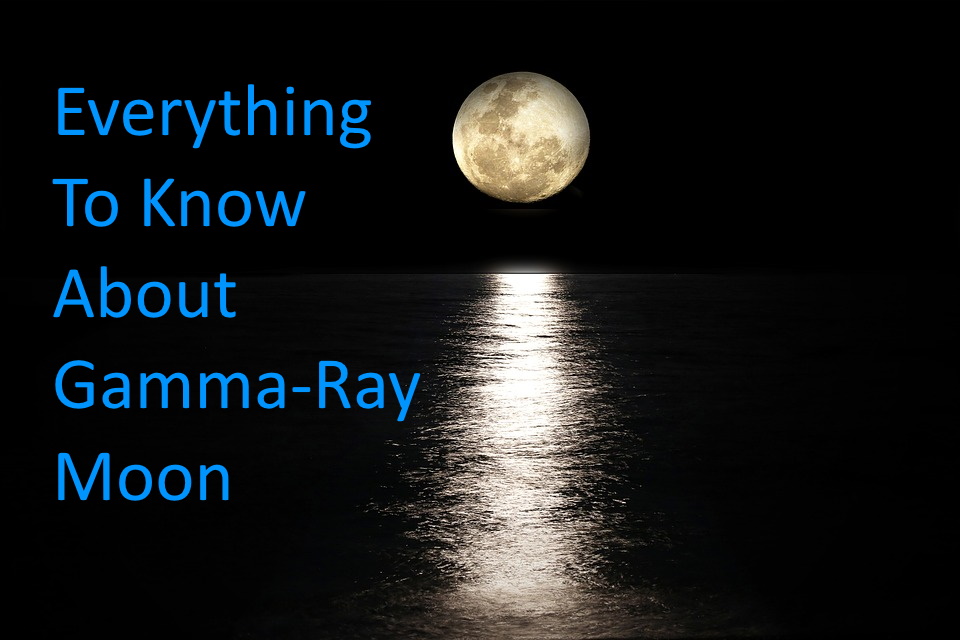What Is The GAMMA-RAY Moon And How GammaRays Work

When it comes to the universe and our galaxy, there is so much more going on than what we usually are capable of perceiving. Just take a look at the Moon from any point on the surface of the Earth and one shall be pardoned for imagining that it is an entity that does not really move, the only unchanging bit of the sky.
THE PHASES OF THE MOON
From where we stand on the Earth, the surface of the Moon appears to be a bit dark as the illuminated side of it is facing away from us. And as the Moon resumes its orbit counterclockwise around the Earth (as seen from above the north pole), more and more of the part of the Moon that is illuminated ends up becoming visible to those on the surface of the Earth, until it reaches the stage we all refer to as the “full Moon” stage. A Full Moon occurs when the Moon has moved in its orbit so that Earth is considered to be “between” the Moon and the Sun. In a way, it can be said that after a seemingly endless amount of time, the similar complex patches of lighter and darker hues of the moon are anything but difficult to see.
THE MOON AS A CLOCKWORK UNIVERSE
When the matter at hand is how human beings perceive the moon, it can be said that we think of the moon as a piece of a clockwork universe. Obviously, most of us even realize that this is just a fantasy. As each year passes, the gravitational tides between the Earth and Moon disseminate somewhat more of the vitality that is repressed in our combined framework, and the Moon ends up sliding about 3.8 centimeters further from us. In addition to this, humans realize that the Moon encounters normal shooting star effects, and experiences its own particular, and shifting, collaboration with the solar wind because of limited, powerless magnetic fields at its surface.
Additionally, the Moon is a gigantic sponge for cosmic beams and rays – nuclear or subatomic particles of high vitality flying into the Milky Way at a speed that is quite similar to that we know as light-speed, driven by phenomenally energetic forms somewhere else known to man. At the point when these molecules crash into the surface of the moon, a portion of their vitality is changed over to photons, at extremely high energies. Then, a portion of those photons, in the gamma-beam part of the electromagnetic range, break to stream back out into the universe.
Thanks to the National Aeronautics and Space Administration, or what we commonly know as NASA, and their Fermi Gamma-beam Space Telescope, which is an orbital high-vitality galactic observatory, working since 2008, and has been relentlessly gathering information on that discharge of lunar gamma-beams.
WHAT EXACTLY ARE GAMMA RAYS?
The unnerving, hellish glow that was seen coming from[restrict] the image of the Moon captured by the Fermi Gamma-beam Space Telescope may appear to be unreal since it is actually invisible when it comes to the naked human eye. But instruments that have been specifically designed to detect gamma rays tell scientists the glow is real. It can be said that this eerie glow around the moon is actually more than just a grainy, red image, and is actually a gaudy aide-mémoire that there is so much more going on than meets the human eye. In addition to that, it is also a reminder that it is essential for any and all human beings that plan on visiting the Moon to be safeguarded from this high-energy radiation.
Gamma rays are one of the most astounding forms of light in the Universe – with extreme amounts of energy. The wavelength of a Gamma-ray is considered to be somewhere around a picometer (that is 10^-12 meters), which is generally a similar order of the extent as the size of a hydrogen particle. It is said that these wavelengths are a thousand times shorter than the wavelength of visible or noticeable forms of light.
WHERE DO GAMMA RAYS COME FROM?
In the part of the electromagnetic spectrum where these rays emit from, the Moon is considered to be actually brighter than the Sun. This is because of the fact that the Sun produces more than half of its energy in other parts of the continuum, though it does produce a few gamma rays, especially during solar flares. Most of the gamma rays emitted in our Solar System originate from faraway sources such as quasars and active galactic nuclei, more commonly known as the AGN. The Moon is actually a secondary source of gamma radiations and produces gamma rays through all the interaction it has with other cosmic rays.
Cosmic rays are a kind of radiation with extremely high levels of energy, and these energy levels are, for the most part, produced outside our Solar System. They are manufactured by objects such as the supernovae and active galactic nuclei (AGN). When cosmic rays hit the surface of any kind of matter, such as the surface of the Moon in this instance, they lead to the creation of gamma rays.
GAMMA RAYS AND THE MOON: WHAT’S THE CO-RELATION?
The high energies of gamma beams imply that this form of light is phenomenally harmful to terrestrial life. Ultraviolet (UV) light does not enter far into the skin – it can harm the surface layers of the skin, which usually ends up in moderate to slightly severe burns from the sun, yet it will not harm anything past an initial couple of layers of the skin. (UV light will be that as it may, increase your odds of skin malignant growth and cancers, especially in the event that you get very extreme burns from the sun.) Gamma rays can infiltrate a lot further into the body and can crush or modify the DNA inside the cells, which ends up in massive changes in the replication directions of the cells. As a result of being severely affected by gamma rays, a person may suffer from infections and cancers related to radiation, yet with no surface burning of the skin occurs.
On a much brighter note, our air is opaque when it comes to gamma beams, so the normal degree of gamma radiation coming towards the Earth is shut out by the atmosphere. The air makes a magnificent showing of shielding us from the beating our cells would some way or another be taking, thanks to gamma rays. Then again, the way that our environment is such a successful divider and protector from this wavelength of light implies that we cannot actually watch any of the gamma beams that are produced somewhere else known to mankind (which is an intriguing field with a great deal of science to be performed) from the outside of the Earth. So as to see this ultraviolet light, we need to place our telescopes into space, outside of our air. Right now, we have the Fermi Gamma-Ray Space Telescope watching the entire sky for gamma beam sources; that telescope created the guide of the sky at the highest point of the page. The splendid line through the center is all gamma radiation from inside our very own cosmic system. Anything far away from that focal locale is most likely originating from a system that we are currently not in touch with, or even aware of. Individual splendid focuses in our universe are probably going to originate from the repercussions of a supernova.
The moon, in contrast to the Earth, does not really have a climate to shield it from any sort of hammering of the gamma rays. This implies that there is a consistent progression of high vitality light and little particles beating into the outside of the moon. One of the things beating into the outside of the moon is known as a cosmic beam (which is an exceptionally accelerated small bit of coarseness – the majority of them are protons). Astronomical beams are always gushing all through the universe. When they crash into the outside of the moon and stop, they lead to the creation of gamma radiations, and thus, the concept of the Gamma Ray Moon rises.
This implies that the moon itself gleams hazily with the help of gamma rays, and this is perceivable by our space-based telescopes, which can help in the observation of gamma beams. As we have already discussed, recognizing gamma rays from the surface of the Earth is next to impossible given the light of the fact that our air disrupts the general flow. In a vitality band somewhere in the range of ten million times higher than that of noticeable light, the Moon not just gleams in gamma-beams, it really surpasses the Sun as observed from Earth. Henceforth, the moon really is more brilliant than our sun in gamma beams – our sun, luckily, does not deliver much in the method of gamma radiation. (On the off chance that it did, the gamma radiation from such a nearby source may have pulverized our climate, expelling our sanctuary from this wavelength.)[/restrict]

